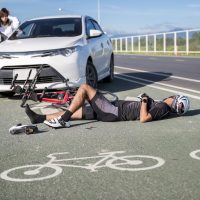
As a parent, you may be aware of Florida’s laws on safety restraints in motor vehicles, which require:
- A full car seat for infants and children up to three years old;
- An approved booster seat for four- and five-year-olds; and,
- A seat belt for children aged 6 – 17 years old.
However, beyond these provisions, the statute doesn’t provide much guidance on how to choose the best car seat for your child. National Highway Traffic Safety Administration offers some recommendations, starting with the four types of car seats that parents should consider. An overview should point you in the right direction, so you have confidence that your child is safe in the event of a Ocala, FL car accident.
Statistics on Children Injuries in Car Accidents: You may be surprised to learn that auto collisions are the number one cause of death for children aged 1 to 13 years old. Other key statistics are:
- In 2017, 37 percent of children killed in motor vehicle collisions were not restrained;
- Almost 60 percent of parents don’t properly choose, install, or otherwise use a car seat properly, putting children at risk; and,
- When used in accordance with a manufacturer’s instructions, car and boosters seats can reduce the risk of fatalities by up to 70 percent.
Types of Car Seats for Children
- Rear-Facing: These seats offer the highest level of protection, especially for infants. They feature a harness to secure your baby, and the shape reduces the stress on the neck and spinal cord in the event of a crash.
- Forward-Facing: Your child may graduate to this larger car seat at around 9-12 months, depending on his or her size. The harness restricts forward movement in a collision, and the design protects your child in a side-impact crash.
- Booster Seats: Older children up to age five are still required to use a safety harness, so this type of seat works well during the “in-between” stage – where the child has outgrown a standard car seat but the seat belt doesn’t fit. The booster raises the body so that the lap belt and shoulder harness are properly positioned.
- Seat Belts: As mentioned, children up to age 17 must still buckle up. Make sure the seat belt lies snugly across the lap, and the shoulder strap should not be loose. Avoid allowing the straps to span across the stomach, neck, and face.
Keep in mind that many manufacturers of children’s car seats offer convertible or all-in-one units that can grow with your child.
An Ocala, FL Car Accidents Attorney Can Assist with Your Claim
While this information may be useful in helping you choose the right car seat for your child, auto accidents are still an unfortunate reality. Florida law does provide you with rights if you or your child was injured, so please call the Ocala car accident attorneys at Piccin & Glynn to learn about your potential legal remedies. You can call 352-558-8480 or go online to schedule your free appointment at our Ocala, FL office.
Resource:

